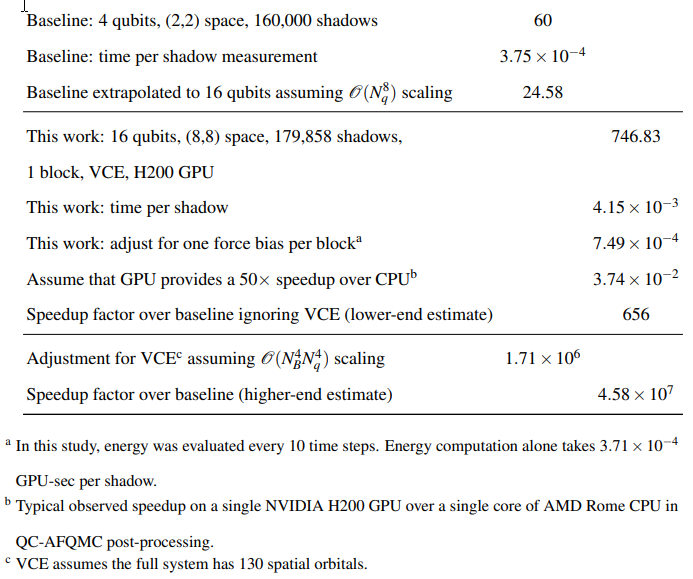Predicting complex chemical reactions has long challenged scientists, especially when speed and accuracy are critical. Recent advances are reshaping this landscape. Researchers have unveiled a hybrid quantum-classical workflow that dramatically improves the precision and efficiency of modeling chemical reaction barriers. This breakthrough is opening new possibilities in computational chemistry, drug discovery, and materials science.
Key Advances Driving the Revolution
At the heart of this innovation is the Quantum-Classical Auxiliary Field Quantum Monte Carlo (QC-AFQMC) algorithm. This approach fuses quantum computing, utilized for preparing highly correlated trial states, with classical high-performance computing for post-processing. Such synergy overcomes the traditional bottlenecks of simulating strongly correlated systems, like those found in transition metal complexes.
- Algorithmic Efficiency: The research team cut classical computation costs by orders of magnitude, reducing energy evaluation scaling from O(N8.5) to O(N5.5). Imaginary time propagation also dropped from O(N7.5) to O(N4.5).
- Quantum Hardware Optimization: Custom control software and firmware for the IonQ Forte quantum processor delivered a ninefold speedup in quantum circuit measurements.
- Massive Classical Acceleration: Leveraging NVIDIA GPUs for post-processing achieved up to a 45-million-fold speedup, making previously impossible simulations practical.
- Accuracy and Noise Resilience: The workflow predicts reaction barriers within ±4 kcal/mol of gold-standard results in ideal conditions, and maintains robustness against certain quantum hardware noise sources.
- Scalability: Techniques like active space approximations and virtual correlation energy enable the method to tackle large, complex molecules, a must for real-world chemical and pharmaceutical applications.
- Future-Proofing: The study highlights ongoing needs for advanced error mitigation and trial state preparation to further improve precision and scalability.
How the Quantum-Classical Workflow Operates
QC-AFQMC builds on classical AFQMC by using quantum devices to prepare sophisticated trial wave functions. This approach captures the multi-reference character of strongly correlated electrons without exponential cost.

Unlike the commonly used Variational Quantum Eigensolver (VQE), QC-AFQMC confines quantum measurements to the initial phase, sidestepping iterative feedback and the high error rates of Quantum Phase Estimation (QPE).
A standout innovation is the use of matchgate shadows. This strategy efficiently evaluates overlaps between quantum-prepared states and classical walkers, using random matchgate matrices and Pfaffian evaluation to reduce post-processing from exponential to polynomial complexity. As a result, large-scale simulations become feasible.


TABLE VII: Comparison of the projections of time to compute one step (force bias and local energy) with one walker and one shadow measurement between the state of the art algorithm by Huang et al. (hydrogen molecule) and this work. All time units are in seconds.
Real-World Impact: A Leap for Chemical Catalysis
The team demonstrated their workflow on the oxidative addition step of the nickel-catalyzed Suzuki–Miyaura reaction, a pivotal process in drug synthesis. By combining quantum computations on IonQ Forte's trapped-ion device with GPU-accelerated post-processing via AWS, they effectively modeled transition metal catalysts, an area where traditional computational methods often falter.
- Quantum Execution: Hardware tuning slashed execution time by nearly 90%, reducing a projected 35-day task to under 4 days.
- Classical Post-processing: GPU acceleration yielded up to a 45-million-fold speedup over previous methods.
- Accuracy Benchmarks: Reaction barrier predictions closely matched reference results under ideal conditions, and remained robust on noisy hardware, though some deviations highlighted the need for further error mitigation.
What This Means for the Future
This achievement shows that hybrid quantum-classical computing can be a practical solution for some of the most challenging problems in quantum chemistry. By playing to the strengths of both quantum and classical technologies, the approach delivers unprecedented speed and scalability. QC-AFQMC is poised to become a foundational tool for computational scientists, with major implications for drug discovery, catalysis, and materials innovation.
Continued progress will require further advances in quantum error mitigation, algorithm design, and handling larger active spaces. As hardware and software evolve together, this research marks a major milestone on the journey to real-world quantum computing applications in science and industry.

Hybrid Quantum-Classical Algorithms: Transforming Molecular Simulations for Drug Discovery and Materials Science
Quantum-Classical Auxiliary Field Quantum Monte Carlo with Matchgate Shadows on Trapped Ion Quantum Computers